- Home
- Robert Graysmith
Black Fire: The True Story of the Original Tom Sawyer Page 14
Black Fire: The True Story of the Original Tom Sawyer Read online
Page 14
While these houses tottered above the rim of a gulch, necessity had made an important thoroughfare; dwellings in lower-lying areas had the opposite problem. The regraded roads formed a high embankment, nearly burying the block of houses at its foot. Residents became archaeologists, excavating the falling earth each evening to tunnel to their buried front doors. No flat land existed between Nob Hill and the water’s edge along Montgomery Street. Wide California Street had to be planked by the following year. Between California and Broadway was the densest area of business. Small portions of Montgomery and Washington streets had been cobblestoned, but the numbering of houses on Washington would not begin until the following May. Then San Franciscans could ride or walk from one end of the town to the other over reasonably dry ground. By year’s end, seventeen streets would be planked for almost ten blocks. It was one step ahead, two steps backward as repeated battering by iron-rimmed wagon wheels and sharp horseshoes ruined the new planking. “Planking has served well in the infancy of the city,” the press commented, “but it is probable that so perishable a material will soon give place to cobblestones or Macadamized paving, or even square-dressed blocks of granite or whinstone.” An enterprising local, Charles Polhemus, built a forty-foot-wide plank road from Third to Sixteenth Street, the edge of the Mission District. He charged a toll: twenty-five cents per horseman, seventy-five cents for a wagon with two horses, and a buck for a four-horse team.
Alta editor Edward Gilbert stormed from his office. Though he owned the most important paper in town, he was perpetually discontented. He hated what he saw in the city and wished he could do away with the whole thing. Along the waterfront a man was found with a cord around his neck, another with a crushed skull, and another with knife wounds in his back. In an argument over a cigar, teenager Domingo Basquez stabbed a man to death. Gilbert passed warehouses where miners inside wagered on dogfights. Over on Kearny and Commercial and Clay streets, rat races and rat circuses flourished. Plays presented at theaters like the Lyceum and Bella Union appealed to the basest emotions. As for the arsons, he did not think the Ducks were behind them. No, he had another theory: A merchant had instigated the fires. Some merchants had been outbid, out-ordered, and beaten to San Francisco by their rivals. Before the Christmas Eve fire, their warehouses had been swollen with unsold goods with more shipments of the same arriving with every steamer. Afterward the fire prices rose 20 percent and merchants cleared their inventories.
Seeing corruption all around him, Gilbert walked to the bright lights of the Square, the center of all debauchery. All-night gambling dens such as the Parker House were raking in gold dust. “The city shouldn’t be this way,” he thought. “Somebody should do something to clean this wickedness up.” Why, there were more saloons than boardinghouses in town; more gambling dens than hotels. He stalked across to Delmonico’s for a steak and sliced tomatoes. As he ate, he jotted down ideas for an editorial: “Systematic pillaging by organized gangs during the confusion of each fire suggests the presence of profit-motivated arsonists such as merchants.” “Yes,” he vowed, “someone should do something.” He heard the crackle of flames in the distance—“My God!” he thought. “The Ducks are quacking!” In the heat and tumult, the cry “Quack! Quack! Quack!” went up everywhere.
It was not a complete city-destroying conflagration this time, but the volunteers, Sawyer, and the torch boys ran as if it were. Sweat dampened Sawyer’s new red shirt. As they guided the fire engines, blue wharf rats and brown Australian kangaroo rats scurried from the torchlight. The Sydney Town Ducks were deadly, but ducks lay eggs and those eggs eventually hatch into ducklings potentially more lethal. Since these children had grown up in the atmosphere of their parents’ depravity, they began to rob and pillage on their own as soon as they left the nest. Known as the Tarflat Hoodlums, they roved south of Market and over most of unhappy Happy Valley, waylaying, beating, and robbing anyone they met. In their black coats, blue spring-bottom trousers, and buff-colored felt hats, they treated mothers and their little girls no better than men and boys. When an officer intervened, the Tarflatters beat him nearly to death. The call of gold had drawn the most reckless young men to San Francisco: the best artists, intellectuals, farmers, merchants, and clerks. It also attracted the worst: cutthroats, ex-convicts, profiteers, pirates, traders, deserters, renegades, crooked politicians, and the Lightkeeper. Gold made it the most diverse city on the globe. Every nationality—British, Norwegian, Italian, French, Spanish, German, and Dutch immigrants—filled its streets. Baptist ministers and cheapjacks mingled with Philadelphia Quakers and mountain men. South Sea Islanders and Chinese in blue jackets trudged alongside California Spaniards. Thus the volunteer companies were composed of whichever ethnic group was most representative in the particular neighborhood where the firehouse stood. New companies were all French, all Irish (the Hibernia), and all German (the St. Francis Hook and Ladder), who wore handlebar mustaches, brown linen pantaloons, Hessian boots, and loose brown coats. The Germans played their violins during the fires to cheer on the volunteers. Each morning on Stockton Street between Pacific and Broadway streets, the all-French Lafayette Company Number Two drilled, gave standing and passing salutes until their arms were sore, rolled drums, and flourished fifes. In their plumed helmets they wheeled back and forth in divisions at double time beneath the flag of France. Lafayette Two’s vexing habit was the wild aggrandizement of anything that could be connected, even remotely, to their beautiful France. They organized their hook and ladder brigade exactly as the Paris Fire Department did, wore uniforms granted by Napoléon, and marched to blazes wearing lace brocade, silks, and dainty fragrances. The local French community of fifty thousand numbered the same as the German community, but they were so ever present in daily life that San Franciscans never thought to consider them foreigners. They congregated in cabarets on Jackson Street, where there were shops with signs in French; two French-language newspapers; a French gambling house, the Polka; and the popular Adelphi Theatre. In some districts, streets looked more like France in architecture than Paris did. Like the Swiss and German communities, they had their own hospital. Instead of the Teutonic Russ Gardens, Lafayette Two gathered farther down the road at the Willows, a Gallic amusement park with a zoo, bear pit, and sea lions. The men of Lafayette Two adored sauces, wine, cheeses, and sourdough bread. Their robust chief stoked his belly with onions, spices, and andouillette of tripe, smoked his pipe, drank his wine, and shared croissants with his friends. Two’s fine artists decorated their engines with beautiful end and side panels of views of their beloved Paris.
As the ethnic and regional firehouses trumpeted their superiority over one another and the French over everyone, it was only a matter of time before a real battle broke out. The French might be great shakes on land, but they were laughingstocks at sea. Dutch Charley joked that French whalers, known as Crappoes (toads), set sail from French ports with tallow candles onboard. “They foresee they will not catch enough whales to obtain oil for light,” he said. Lafayette Two retained their fine manners and courtly ways, if not their tempers, as they made sweeping bows of plumed helmets, but when the inevitable donnybrook broke out, the white gloves came off. In the midst of this escalating tension between volunteer companies, the Lightkeeper would strike again. At times like this Sawyer feared the arsonist might be one of the firefighters from Social Three, Big Six, Lafayette Two, or even Broderick One. The fire companies had become so competitive that setting a fire might enable one company to reach the scene before the others. A man thought a hero to the public might want to appear even more heroic by setting a fire so he could put it out to the applause of the city.
Gilbert adjusted his gold-rimmed glasses and gave his long, narrow galleys a final glance. Tomorrow’s Alta would recommend that the police force be increased again to catch the arsonist. The May fire had also reawakened interest in establishing an actual fire department. The gaps between the blazes coincided with the temporary storage of great deposits of gold awaiting shipment ba
ck east. In each of the fires, stores of gold were looted during the confusion. Still thinking, Gilbert walked to the two-thousand-pound main press—a Washington hand printer, a rugged version of the classic flatbed mainstay of frontier editors, the R. Hoe Imperial. The printer inserted lead slugs for spacing, tightened the metal frame, and applied ink from a leather roller.
“A possibility,” Gilbert thought, “a number of merchants have ordered tons of expensive merchandise. It takes a considerable number of months to sail here. In that time items formally in demand become too plentiful. Vessels arrive daily with goods fit only for the Montgomery Street bogs.” Small fires had broken out all over town, posing the danger of a general conflagration just as several ships all bearing the same cargo anchored. “Such surpluses to the merchants meant a fortune lost overnight. Our arsonist might be a prosperous merchant with a fat overstock and the fires his way of clearing his books and collecting the insurance.” George Wilkes, Broderick’s earliest tutor and adviser in New York, would have agreed. “The warehouses of San Francisco were glutted to the roofs,” Wilkes wrote in a letter to Broderick, “but the precious commission merchants of San Francisco could not make returns to their Atlantic shippers. And then came the terrible conflagrations which gave them a clear balance sheet.” “Thieves, thieves, incendiaries!” shouted Gilbert suddenly. “Hang them! Hang them.” The printer wiped his inky fingers on his leather apron, inserted a sheet of Chinese paper onto the hinged wooden tympan, folded it over the inked type, slid the bed carrying the form to a position beneath the cloth-covered platen, and pulled back on a leather-covered bar to force the platen downward against the bed of metal type and produce an impression. Gilbert paused as he took the first copy. “What if the Lightkeeper had an even darker motive. What if he was one of the volunteer firemen?”
The dust of April and the showers of May turned all of San Francisco into a slough of liquid mud that ruled their lives. Sawyer rolled up his trousers and plunged on. Mud oozed through his worn boots. A two-wheeled covered wagon, deep in the mud, had been backed to the verge of a hill. Its owner had constructed a table from a couple of boxes with boards laid across. On top of a chest were a few loaves, pies, bread and butter, buns and cakes. A teakettle was bubbling over an iron furnace. Sawyer selected a sweet bun and had lunch. Still eating, he walked to the eighty-foot-high sand mountain on Market Street and Third Street and another sixty-foot-high sand hill on Second Street. He trudged on, longing to be at sea as a fire engineer, kindling fires instead of putting them out. But he could not go yet. What was it they said about New York firemen? “Faithful and fearless,” he recalled. He was both. Sawyer, still hungry, accepted a fatty chunk of white sausage, a concoction of fresh veal and pork called bockwurst from a vendor, and plowed on.
By June the mud pits on Market Street, the broadest part of the dismal bog, had covered over with a thin, hard crust spiderwebbed with cracks burned there by the heat. In July, with the end of “June Gloom,” the sun baked the whitewashed board shanties and oilpaper walls and made them matchboxes. The people inside hid behind their muslin and Osnaburg partitions or rocked all night in tumbledown chairs. In the heat, wharf rats snoozing beneath the raised plank sidewalks had become indolent, but the sand fleas had grown bolder. Restlessly the fleas flitted about in sultry winds that daily increased in ferocity. Violent, hot gusts off the bay shook block upon block of warehouses. The hillsides became brown.
To defeat the sandy and boggy roads that made daily commerce and firefighting so difficult, the city fathers had decided to cover over the main streets with planking. But lumber in this wood-scarce city was again costly thanks to the last fire. At over $400 per one thousand board feet, lumber had to be freighted down from Oregon. To fetch local brush from the surrounding hills cost far more in wagon fees and overpriced manpower. Finally, the Council scheduled serious planking to begin and decided to worry about paying later. It would be the least of their worries.
THE LIGHTKEEPER
September 17, 1850–June 22, 1851
The faults of [Broderick’s] career were seen to be the results of his origin, his early orphanage and his youthful associations, but the man himself stood revealed as one whom God had endowed with personal incorruptibility, a grave, earnest, honest, brave man, who in the midst of unparalleled corruption in his own party kept his own hands clean and his record straight.
—The Works of Hubert Howe Bancroft: History of California
One of Sam Clemens’s diversions in the city, whenever it rained so heavily that it would have been unwise to trudge about on mere routine calls at the wharf or the courts, was to play penny ante at the Turkish bath downstairs with the proprietor and a friend of them both, a fireman. The company was amusing and it is probable that Sam found the talk of this fireman more to his liking. Tom Sawyer (such indeed was his name) had been a Brooklyn gamin who took to the sea, had worked on vessels in the Mexican trade, and had served with great heroism in a shipwreck, rescuing many lives: a great exploit no doubt, for he had to swim about in a water boiling with sharks. It was a fortunate acquaintance for the ex-fireman. When the book Tom Sawyer came out, he had embarked in business as a tavern keeper.… Thenceforth he basked in renown, thriving mightily.
—Idwal Jones, Ark of Empire, San Francisco’s Montgomery Block
Eliza “Lillie” Hitchcock
Tug-of-War
There was a terrible night fire in Nevada City on September 17, 1850, but from natural causes, not arson. Gongs sounded as a blazing feedback loop consumed the tinderlike pine houses in the town. The red glare fell far back into a pine forest of dry bark, needled tufts, and dead spines smelling of pitch and turpentine. In San Francisco all was well for a change. A fresh harvest moon dominated the sky. A warm wind swept in from the bay—the so-called Lightkeeper’s Wind as Sawyer had named it and which could be considered a trade wind, if the trade was arson. In San Jose, Broderick slept contentedly. Almost everyone in San Francisco was asleep, too—except the gamblers, johns, and the incendiary who had pulled on his hooded greatcoat and set off into the fog. Whoever he was, in whatever disguise he wore in daily life, he was practicing his true occupation at 4:00 A.M. A trail of sweat coursed down his cheek as he labored through the mud to reach his target. His eyes glittered. Prometheus was bringing the gift of fire to the city; Vulcan, the fire god, was forging it.
All the inmates of the Philadelphia House Saloon on the northern side of Jackson between Dupont and Kearny streets were slumbering before their open fires when the gongs sounded. They woke to terror in their rooms of white muslin walls and oilcloth floors. Hearts beating fast, they pulled on their clothes and staggered toward the nearby Washington Market. They fled, leaving their windows and doors open to provide oxygen for the fire. Swiftly the fire created its own winds through the updraft, and the stairway became a chimney flue to upper rooms. “Not again, not again!” they murmured. “No! For the love of God, No!” Many were awakened a few blocks away on Battery Street by the cry of “Fuego, fuego!” In the tumult the cry, “Quack! Quack! Quack!” went up in the muddy pond. The Sydney Ducks were robbing and murdering and cackling as they did. At his firehouse, Sawyer cried, “Drop everything. Hit the ground running. Jump into your boots, pull up your trousers, and get to the engine.” By 4:10 A.M. volunteers were heaving at the pump handles and hurling themselves at the blaze. The roar of flames drowned out cries for help, but the victims were lucky. The fire moved torpidly because it was night. Night winds go downhill because of the cooler temperatures and move slower than during the day because of higher humidity. Day gusts usually fly uphill because the sun heats the ground and convection carries the fire upward. Burning buildings throw off their own heat, and as the hot gases rise, the vacuum pulls in more oxygen to ignite the unburned carbon in the smoke. That heat creates a convection current and upward tornado that carries the embers for miles to start more fires.
During this fourth great fire the flames ravaged the greater part of the blocks between Dupont Avenue
and Montgomery Street embraced by Washington and Pacific streets. The devastation reached half a million dollars, though officials estimated twice that amount. At least during the fire all personal feuds between ethnic and regional firehouses were temporarily forgotten as the volunteers worked together to one purpose. The arson cleared a hundred one-story wooden shanties. Sawyer went inside the few that had survived. As he had suspected, their interiors were lined with flammable paper and baize (coarse woolen cloth with a nap on one side). The destruction of so many firetraps opened up a large centrally located area where larger, fire-retardant buildings could be constructed. Because the June fire had been so recent, most of the larger buildings had not been rebuilt and thus could not be lost again.
The cost of replacing buildings was becoming cheaper as each year the cost of labor dropped and wood from Oregon became more easily obtainable. Dr. Merritt, a physician who had a sideline of importing knockdown houses from back east, made certain his customers were satisfied. The day before the fire, one of his clients discovered a door missing from his order and had gone to Dr. Merritt to demand it. He promised to deliver it in the morning, so he got up early, carried the door to his customer’s house, and found only a mound of ashes in the spot.

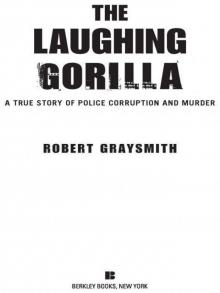 The Laughing Gorilla: A True Story of Police Corruption and Murder
The Laughing Gorilla: A True Story of Police Corruption and Murder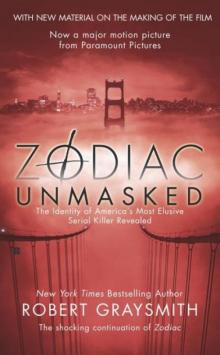 Zodiac Unmasked: The Identity of America's Most Elusive Serial Killer Revealed
Zodiac Unmasked: The Identity of America's Most Elusive Serial Killer Revealed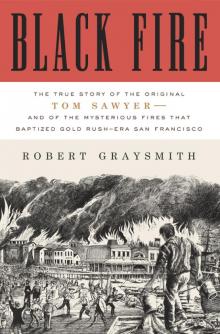 Black Fire: The True Story of the Original Tom Sawyer
Black Fire: The True Story of the Original Tom Sawyer Zodiac Unmasked: The Identity of America's Most Elusive Serial Killers Revealed
Zodiac Unmasked: The Identity of America's Most Elusive Serial Killers Revealed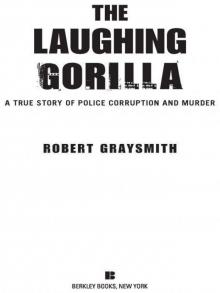 The Laughing Gorilla
The Laughing Gorilla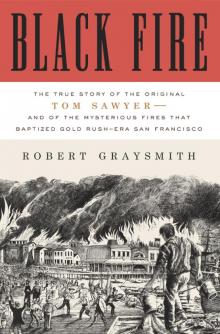 Black Fire
Black Fire